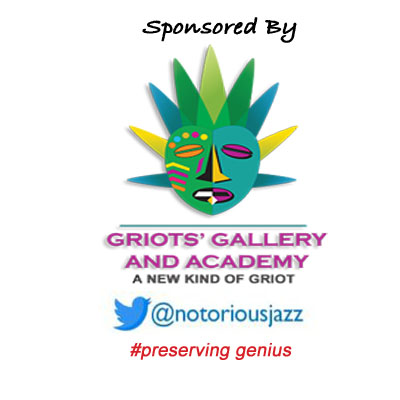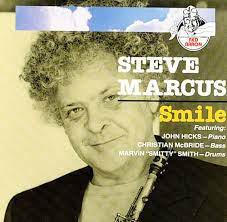
Daily Dose Of Jazz…
Steve Marcus was born September 18, 1939 in The Bronx, New York, and studied at the Berklee College of Music in Boston, Massachusetts between 1959 and 1961. He gained experience playing in the bands of Stan Kenton, Herbie Mann and Larry Coryell from 1963 to 1973.
His debut album as a leader included an arrangement of the Beatles’ song, Tomorrow Never Knows, which also was the album’s title. He worked with jazz drummer Buddy Rich for the last twelve years of the drummer’s life. After Rich died, Marcus led the band and renamed it Buddy’s Buddies.
Saxophonist Steve Marcus transitioned on September 25, 2005 in New Hope, Pennsylvania. He was 66.
More Posts: bandleader,history,instrumental,jazz,music,saxophone
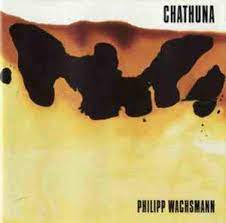
Daily Dose Of Jazz…
Philipp John Paul Wachsmann was born August 5, 1944 in Kampala, Uganda. Influenced greatly by the music of his country he studied violin with Isolde Menges, and music at Durham University, then received scholarships to study violin and composition at Indiana University in Bloomington. He went on to study composition with Nadia Boulanger in Paris in 1968 where he also attended courses in modern music given by Henri Pousseur, and, by Pierre Boulez in Basel. He subsequently lectured at Durham University 1969/70 and then moved to London to start a performing career.
He pioneered new sounds using the violin and electronics and can be heard on over 100 LPs/CDs on different labels including ECM, and plays worldwide. He performs with most of the musicians working in modern improvisation related music. He has performed and recorded with the Stellari String Quartet, The Imaginary String Trio but also works as a soloist.
He regularly conducts his own pieces with the London Improvisation Orchestra, including Three Draft Pistons’ for violin and electro-acoustic tape. He also works with film, dance and architecture. For many years he was Director of the Electronic Music Studio at Morley College and currently teaches courses in composition at the City Literary Institute.
Avant-garde jazz/jazz fusion violinist Philipp Wachsmann gives regular workshops in improvised music at various places and which have been a starting place for many of today’s performers, founded his own group Chamberpot, and has worked extensively in the free jazz and electronica idioms.
More Posts: bandleader,history,instrumental,jazz,piano
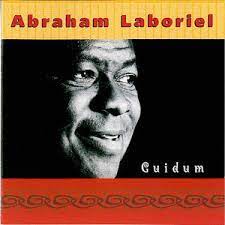
Daily Dose Of Jazz…
Abraham Laboriel López was born on July 17, 1947 in Mexico City, Mexco into a talented family with a rock singer brother and a sister who is a singer, film and television actress. A classically trained guitarist, he switched to bass guitar while studying at the Berklee College of Music, graduating in 1972.
It was during this time that he learned the importance of versatility as a musician. Henry Mancini encouraged Laboriel to move to Los Angeles, California, to pursue a recording career, which he did in 1976. Though he struggled to find work for two years, he found his first gig on a road tour with Olivia Newton-John. After a consequent European tour with Al Jarreau, he settled into a full-time studio career in Los Angeles.
He would go on to work and record with Al Jarreau, Billy Cobham, Freddie Hubbard, George Benson, Herbie Hancock, Lalo Schifrin, Gary Birton, Stan Getz, Larry Carlton, Lee Ritenour, Quincy Jones, Randy Crawford, Dave Grusin, and Umberto Tozzi as well as Stevie Wonder, Michael Jackson, Barbra Striesand, Madonna, Andre Crouch, Herb Alpert Minnie Riperton, Barry Manilow, and many others.
Abraham was a founding member of the bands Friendship and Koinonia. With the latter he recorded four albums. In addition he recorded several solo albums on which he recruited a cast of musicians that included Alex Acuña, Al Jarreau, Jim Keltner, Phillip Bailey, Ron Kenoly, his son Abe Laboriel Jr. on drums, and others.
In 2005, he was awarded an Honorary Doctorate of Music by the Berklee College of Music. Electric bassist Abraham Laboriel has played on over 4000 recording sessions, is ranked No. 42 on Bass Player magazine’s list of The 100 Greatest Bass Players of All Time, and continues to record and perform as a member of the band Open Hands with Justo Almario, Greg Mathieson, and Bill Maxwell.
More Posts: bandleader,bass,history,instrumental,jazz,music
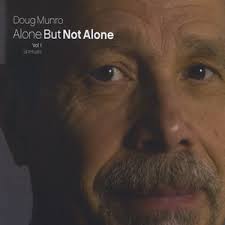
Daily Dose Of Jazz…
Douglas Anthony Munro was born July 9, 1953 in Yonkers, New York. He started his musical studies at age seven, taking drum lessons and by age fourteen, he was playing dances in Yonkers and New York City. At 20, he broke his back in a gymnastics accident, which ended his career as a drummer. However, in 1977 the 24 year old underwent a successful back surgery, and began playing guitar to pass the time during recovery
After his recovery he became a guitarist, performed locally and taught guitar lessons. In 1986 he released the LP Courageous Cats. and towards the end of the decade Doug met record producer Joe Ferry, and began a 25 year professional relationship. He would go on to divide his career into arranging, performing, teaching, and producing with Ferry. In 2004 he started a series of four Boogaloo recordings for Scufflin’ Records. The first, Boogaloo to Beck, featured Lonnie Smith, David “Fathead” Newman, and Lafrae Olivia Sci. He would go on to release to Brazilian jazz albums under the Big Boss Bossa Nova title.
The early Nineties saw Doug arranging and producing with Joe Ferry. Their first album, We Remember Pastorius, was a tribute to jazz bassist Jaco Pastorius. He would go on to co-produce and arrange a series of recordings for Shanachie Records. This period saw him delving into ska, receiving two Grammy nominations. In 1997 Munro added orchestrations to the original motion picture soundtrack for the Muhammad Ali documentary When We Were Kings which won the Academy Award for Best Documentary Film.
Munro continued to work on over 40 recording albums into the new millennium with Vitamin Records. He has produced lessons for Just Jazz Guitar, Premier Guitar, and TrueFire.com. He founded the jazz studies program in the Conservatory of Music at Purchase College in 1993, and served as the director of the program from 1993-2002. He retired in 2019 as Professor Emeritus and Director Emeritus of the Jazz Studies program at the Conservatory of Music at Purchase College.
Guitarist, arranger, producer, composer, author, and educator Doug Munro specializes in jazz, bebop, Brazilian jazz, jazz fusion, and gypsy swing. Since 1986 he has released over fifteen albums as a band leader and has appeared on over 75 recordings as a guitarist, sideman, producer, and arranger. He has been nominated for two Grammy Awards and was the recipient of two NAIRD Awards by the American Association of Independent Music.
More Posts: arranger,bandleader,composer,educator,guitar,history,instrumental,jazz,music,producer
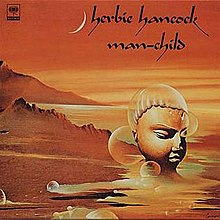
The Quarantined Jazz Voyager
This week the ever vigilant Jazz Voyager is watching this new version of the virus creeping back to once again exploit humanity’s complacency relative to the collective health. People are still dying, maybe not at the rate over the past two years but dying. So in the spirit of staying healthy, I am selecting a classic funk~fusion album from the shelves and placing it on the turntable to take a renewed listen. This week it is the album Man-Child by Herbie Hankcock.
It is the fifteenth studio album by the jazz pianist. Recorded between 1974 and 1975, it was released on August 22, 1975 by Columbia Records, it was the final studio album to feature The Headhunters. The album was produced by David Rubinson and Hancock, and was recorded at Wally Heider Studios and Funky Features in San Francisco, California as well as Village Recorders and Crystal Studios in Los Angeles, California.
Departing from the music of his early career, Herbie gives us one of his most funk-influenced albums. Utilizing more funk based rhythms around the hi-hat, and snare drum, the tracks are characterized by short, repeated riffs by both the rhythm section, horns accompaniment, and bass lines. With less improvisation, more repetition of riffs along with brief solos, he re-introduces the electric guitar to this new sound.
The core group of The Headhunters was Paul Jackson, Bill Summers, Harvey Mason, Bennie Maupin, and Mike Clark (who replaced Harvey Mason post-1974). Hancock had toured and recorded with them for the previous three years. This was their final album as a group.
Tracks | 45:17- Hang Up your Hang Ups (Hancock, Melvin Ragin, Paul Jackson) ~ 7:29
- Sun Touch ~ 5:12
- The Traitor (Hancock, Ragin, Louis Johnson, Wayne Shorter) ~ 9:38
- Bubbles (Hancock, Ragin) ~ 9:03
- Steppin’ In It ~ 8:42
- Heartbeat (Hancock, Ragin, Jackson) ~ 5.16
- Herbie Hancock ~ piano, keyboards
- Bud Brisbois ~ trumpet
- Jay DaVersa ~ trumpet
- Garnett Brown ~ trombone
- Dick Hyde ~ trombone, tuba
- Wayne Shorter ~ alto and soprano saxophones
- Bennie Maupin ~ soprano and tenor saxophones, bass clarinet, alto and bass flutes, saxello, percussion
- Jim Horn ~ flute, saxophone
- Ernie Watts ~ flute, saxophone
- Dewayne McKnight, David T. Walker ~ guitar
- Wah Wah Watson ~ synthesizer, voice bag, guitar
- Henry E. Davis ~ bass guitar
- Paul Jackson ~ bass guitar
- Louis Johnson ~ bass guitar
- Mike Clark ~ drums
- James Gadson ~ drums
- Harvey Mason ~ drums
- Stevie Wonder ~ harmonica
- Bill Summers ~ percussion
More Posts: adventure,album,club,genius,jazz,museum,music,piano,preserving,restaurant,travel




